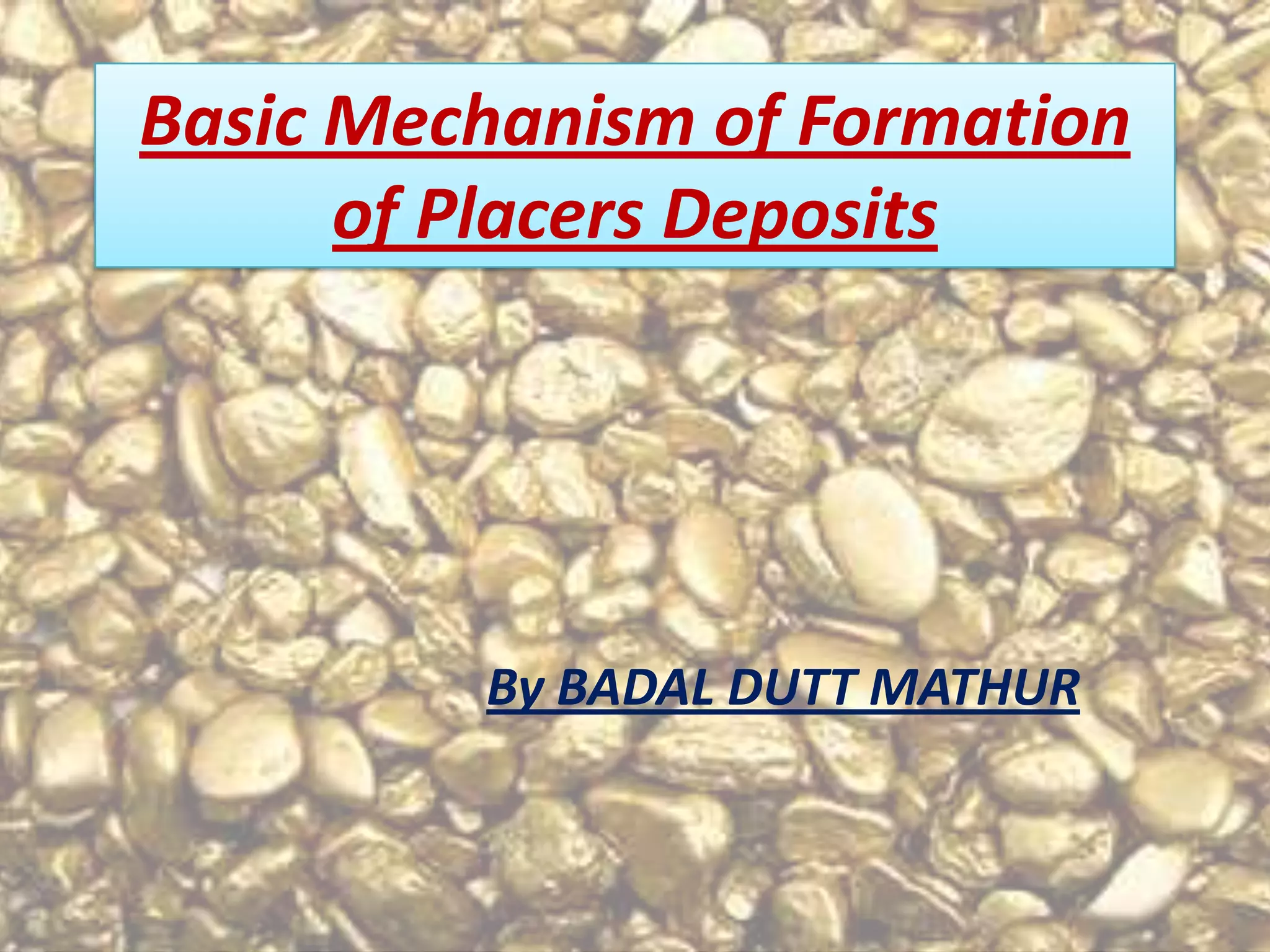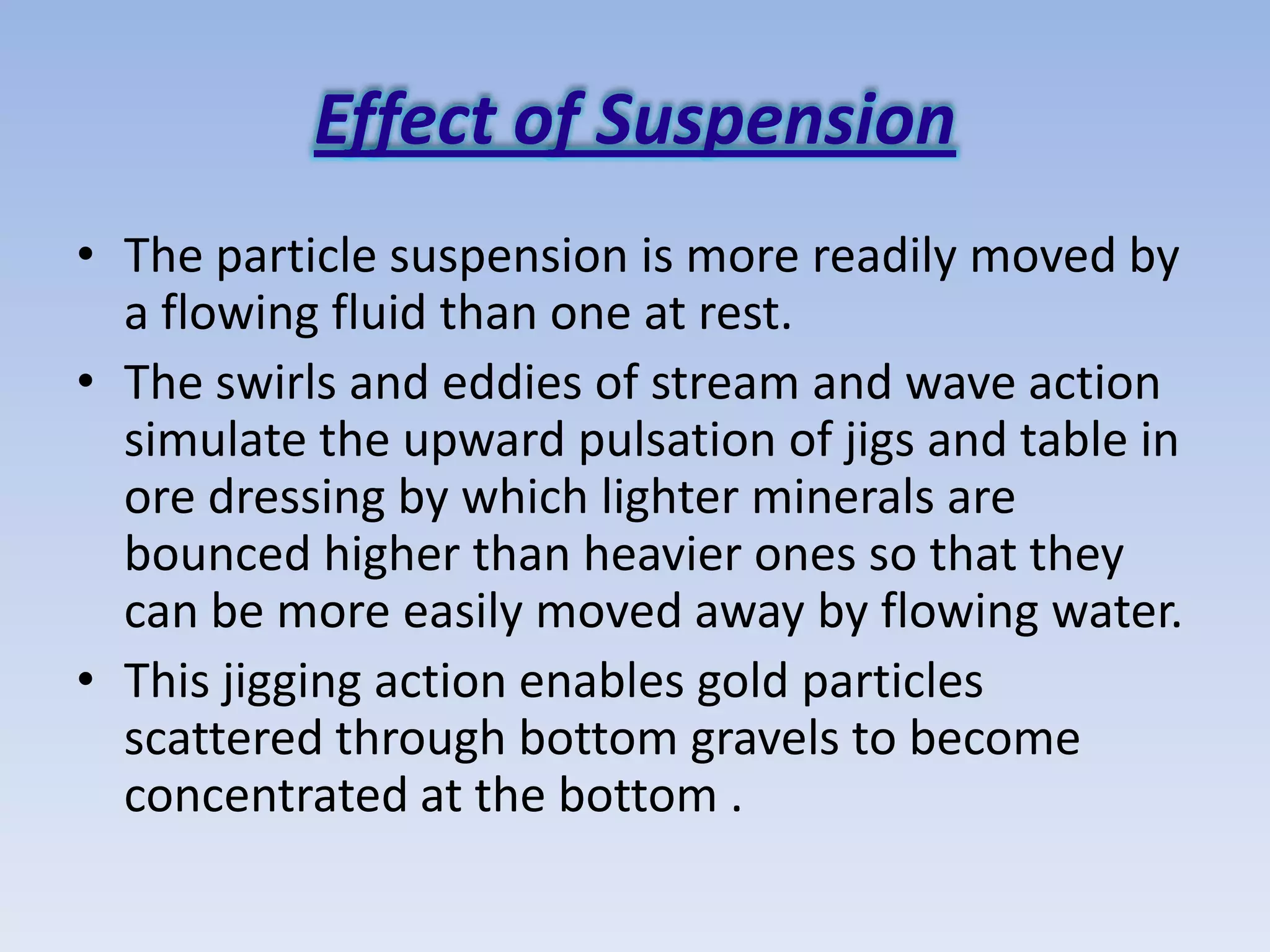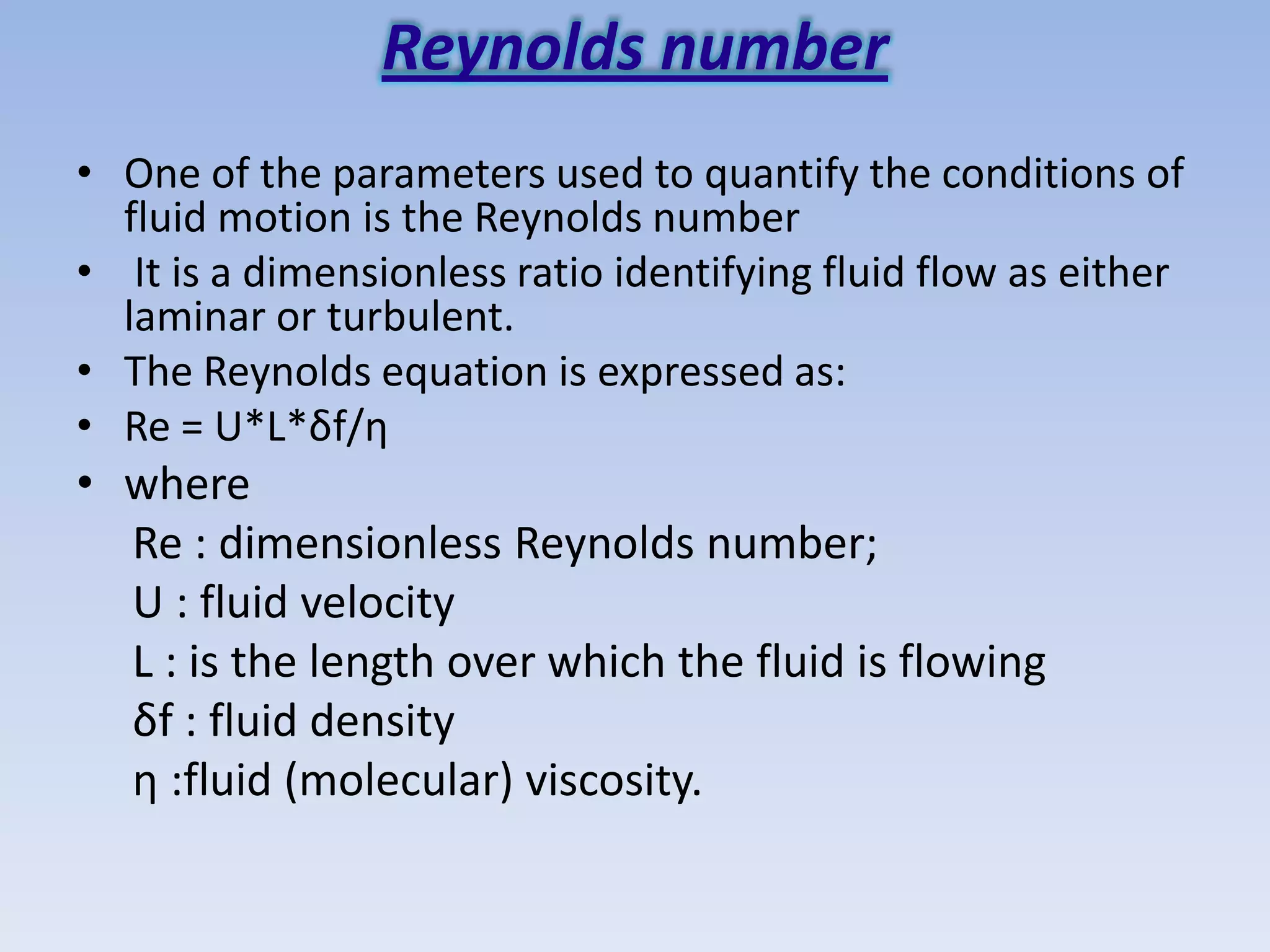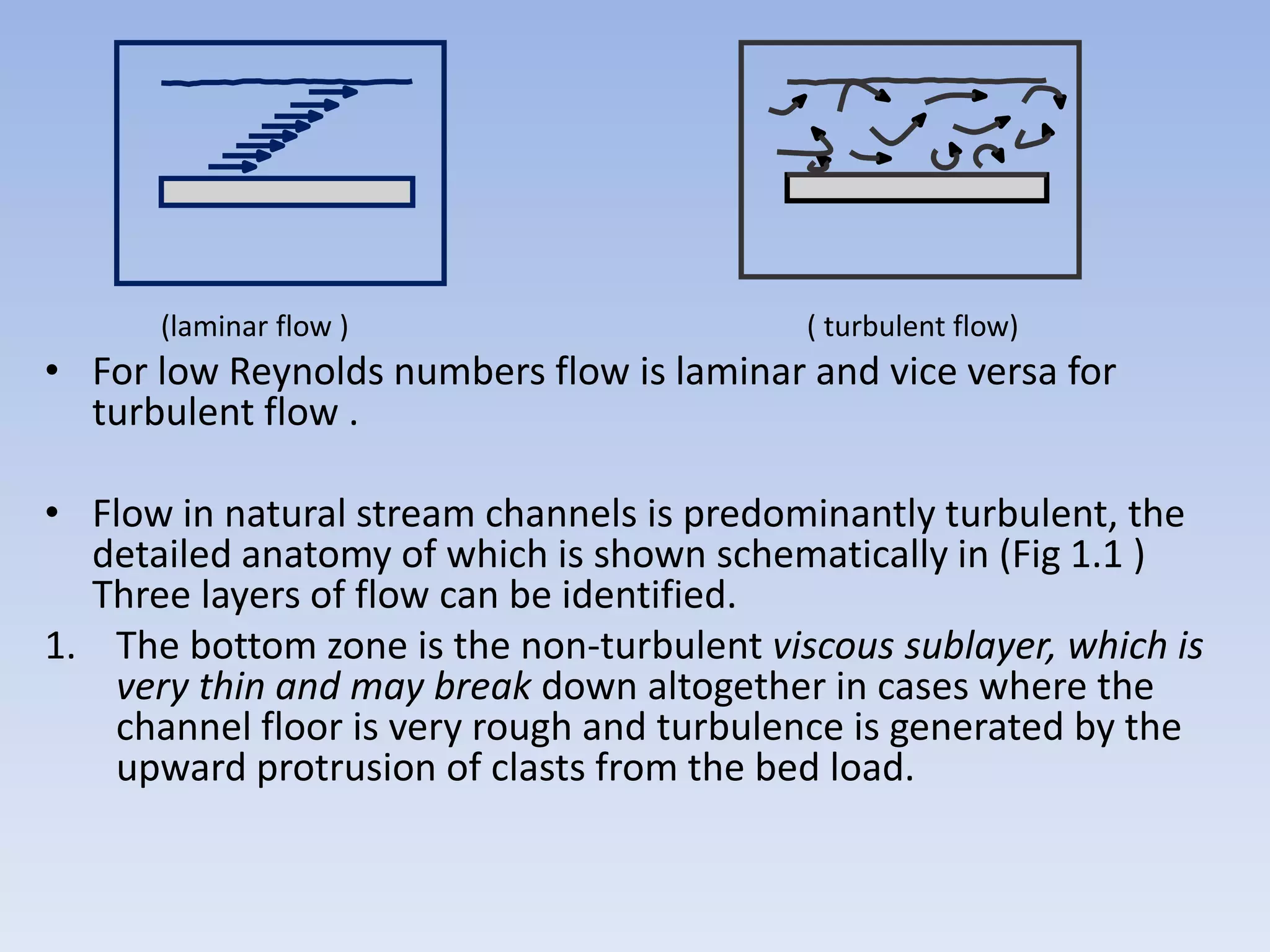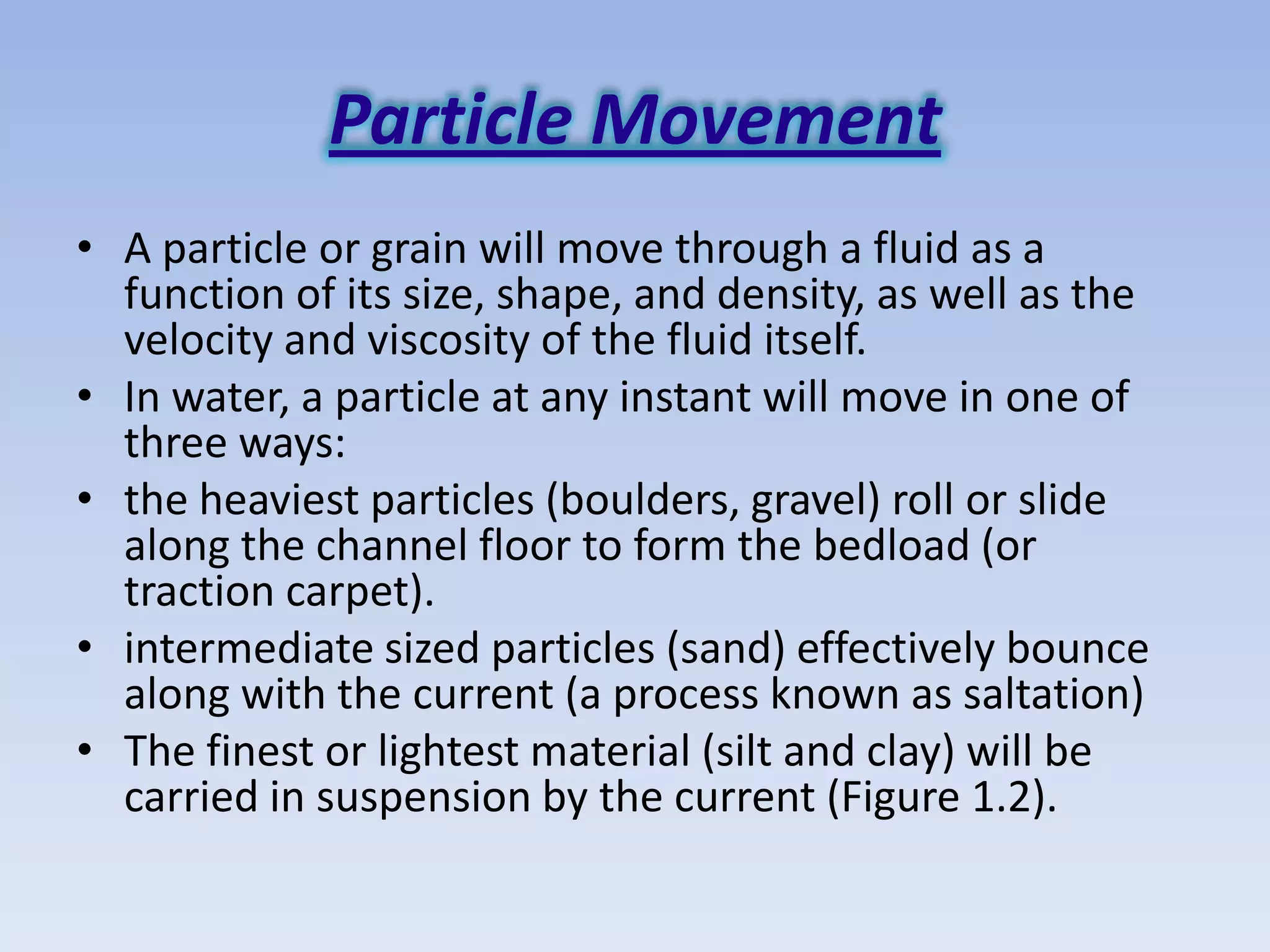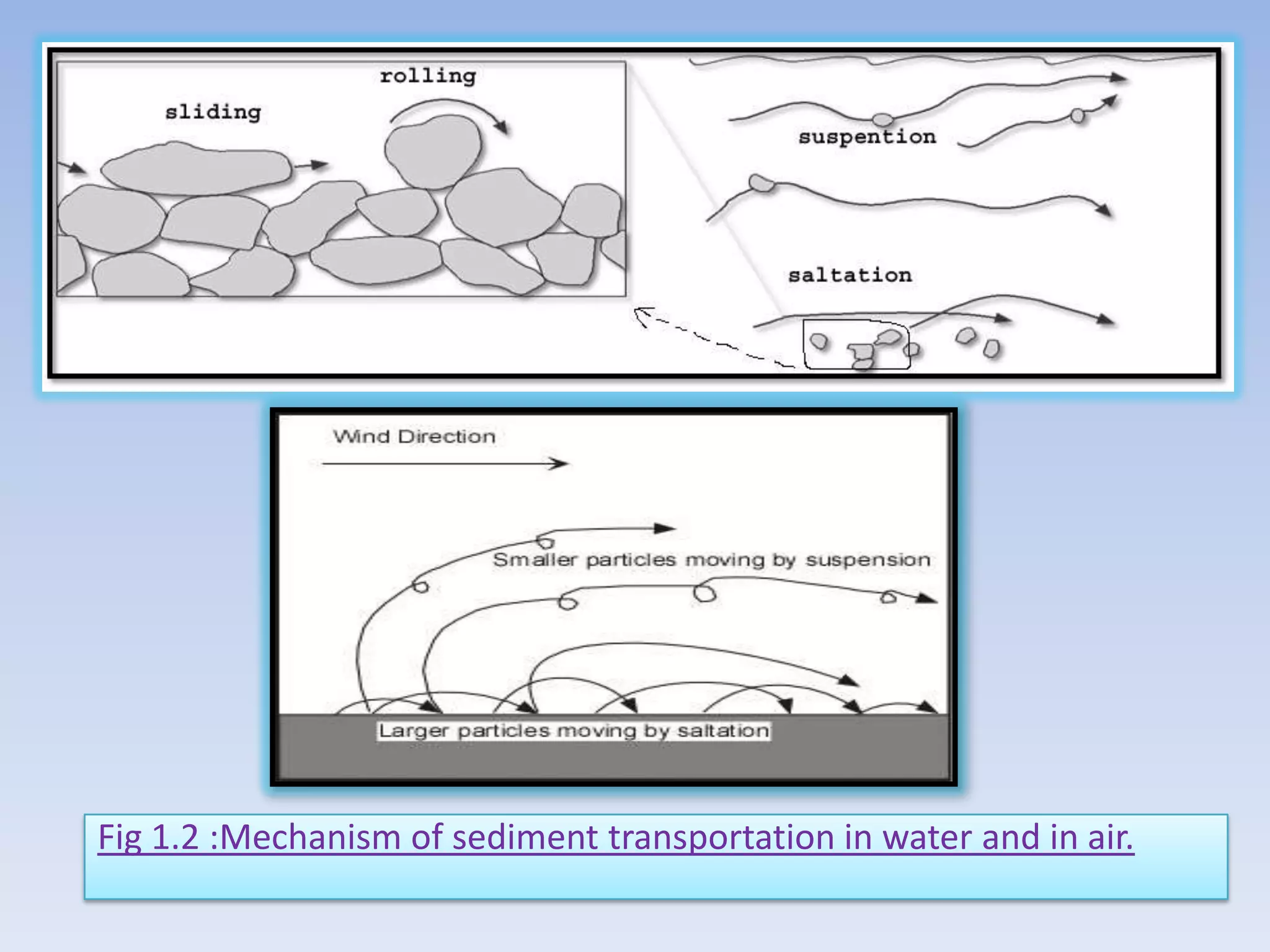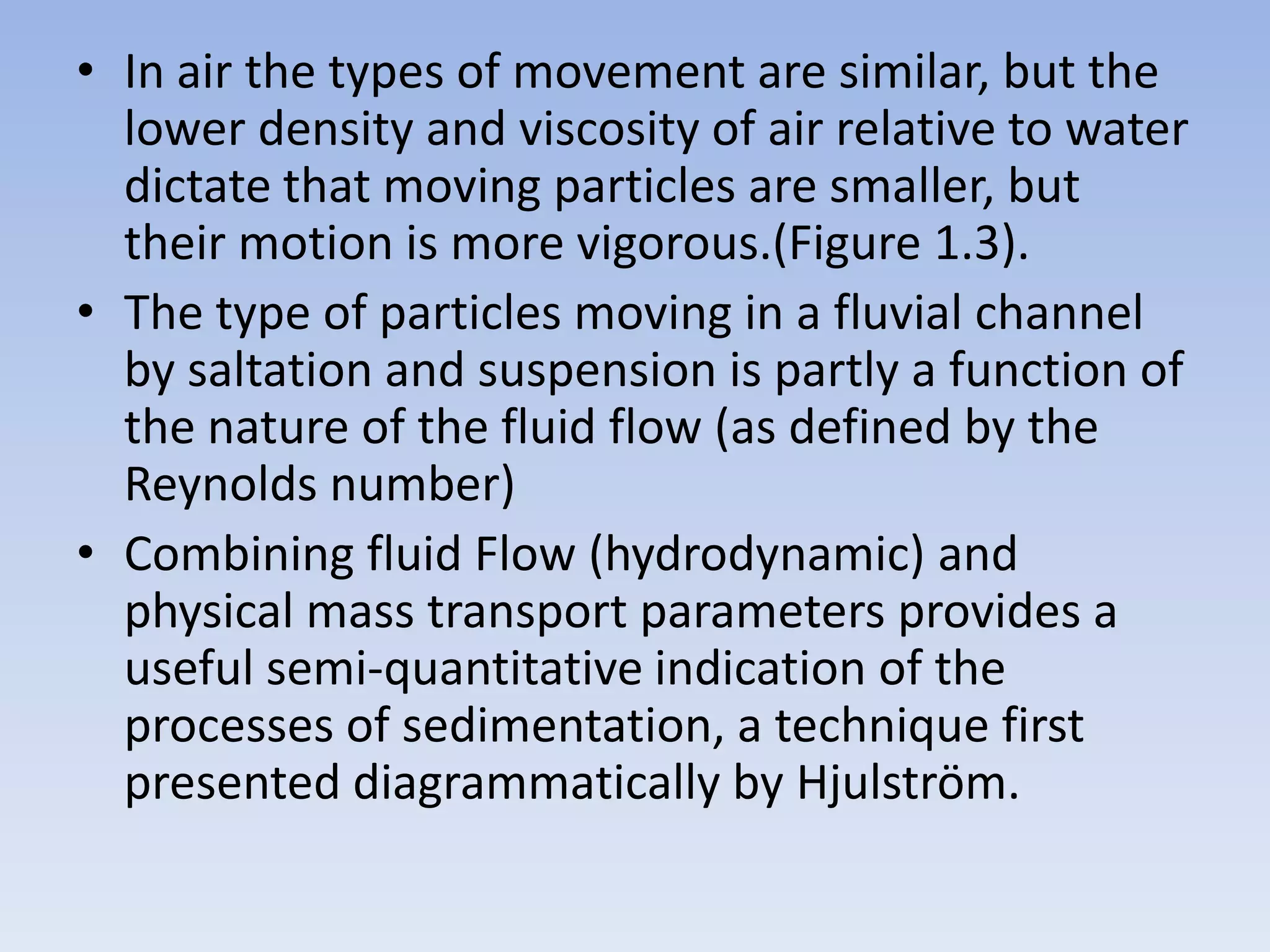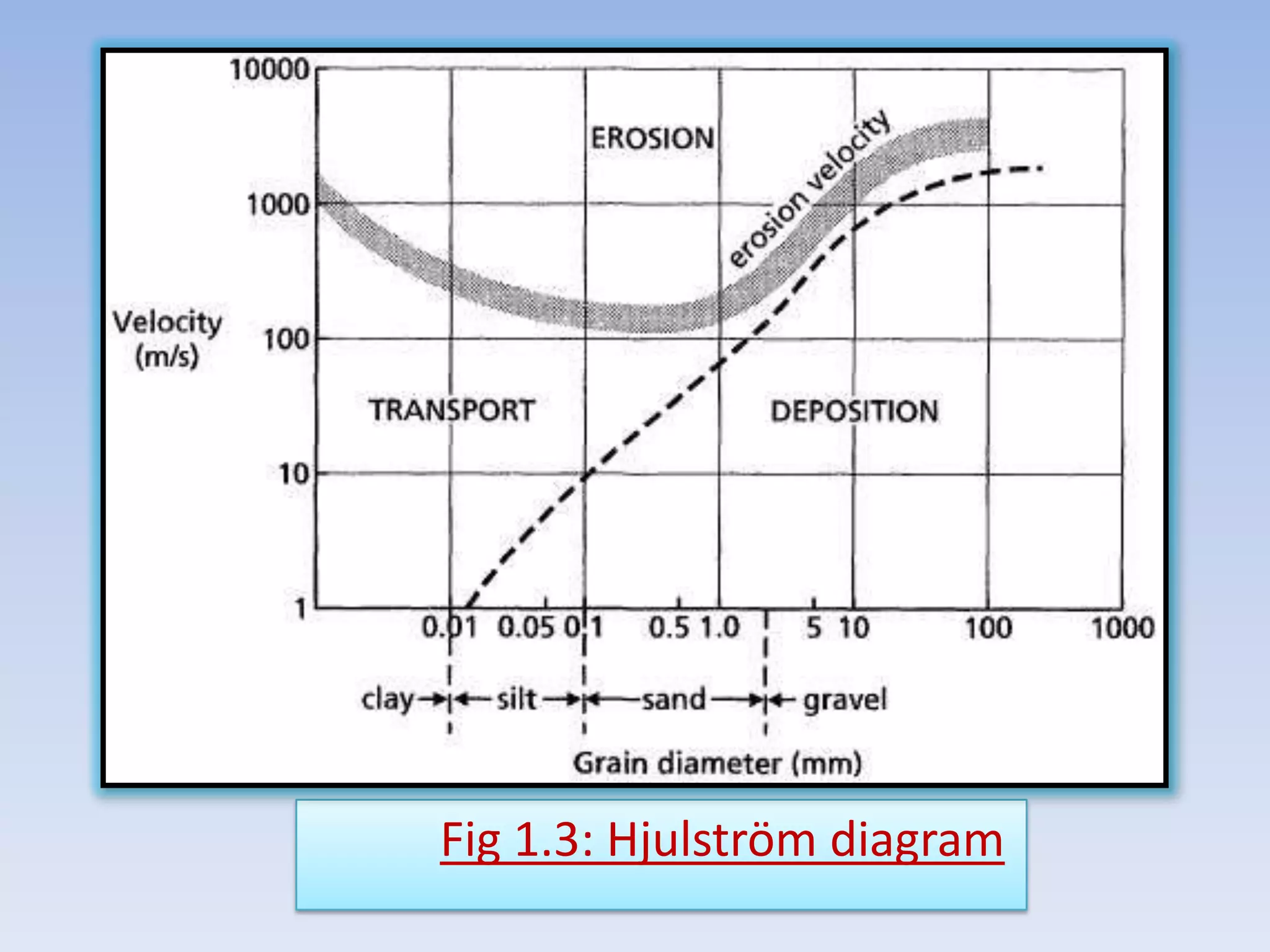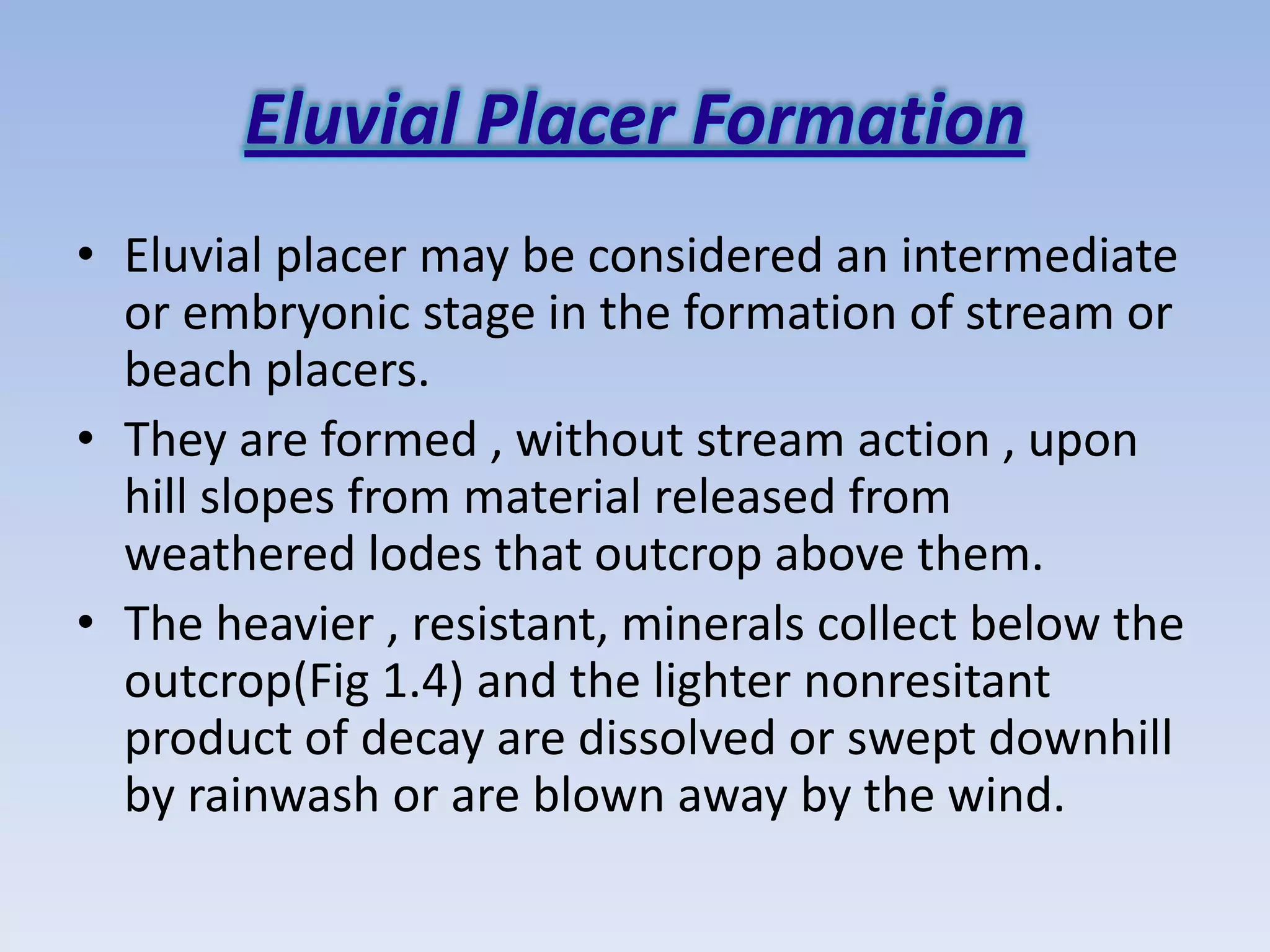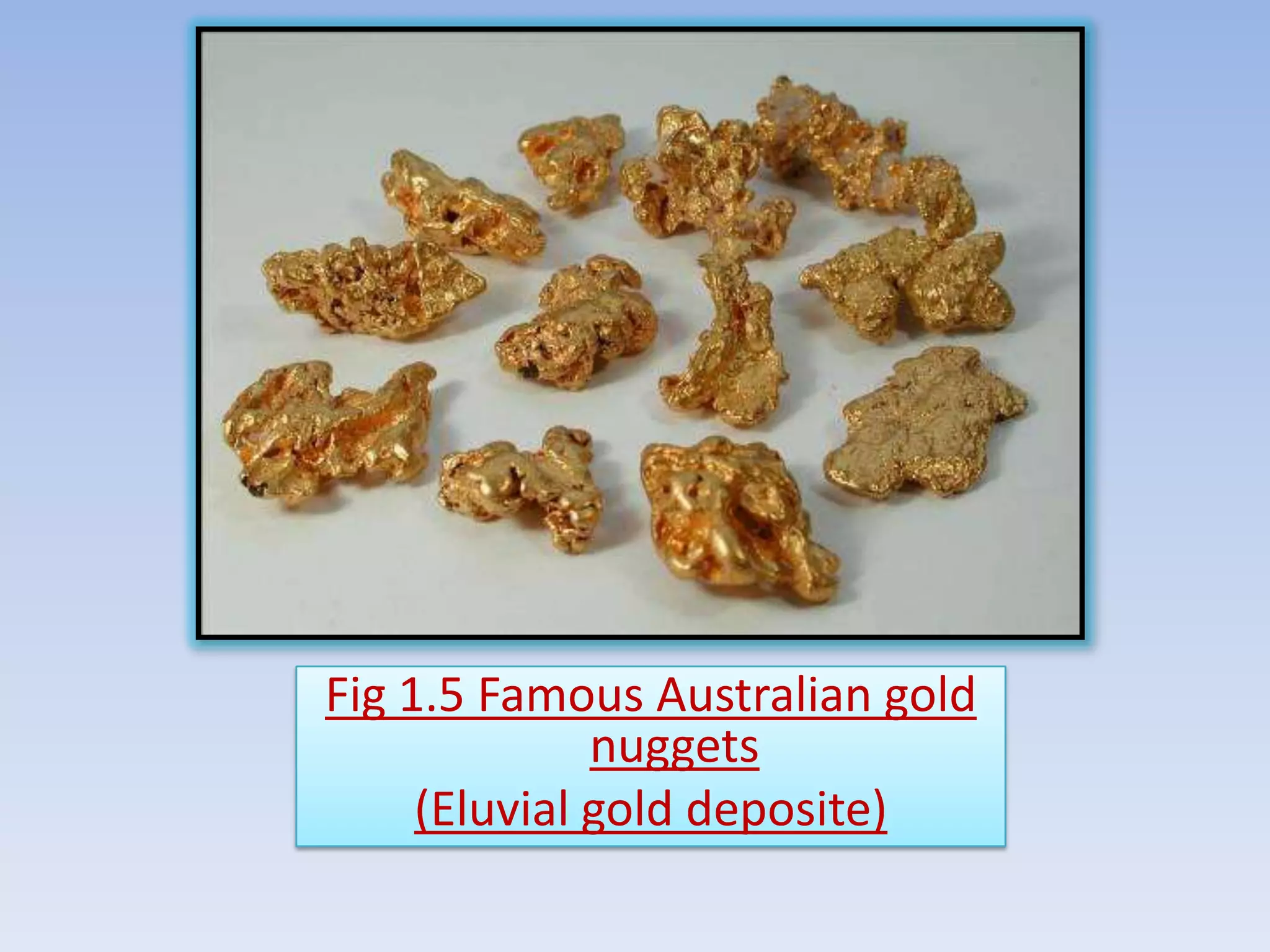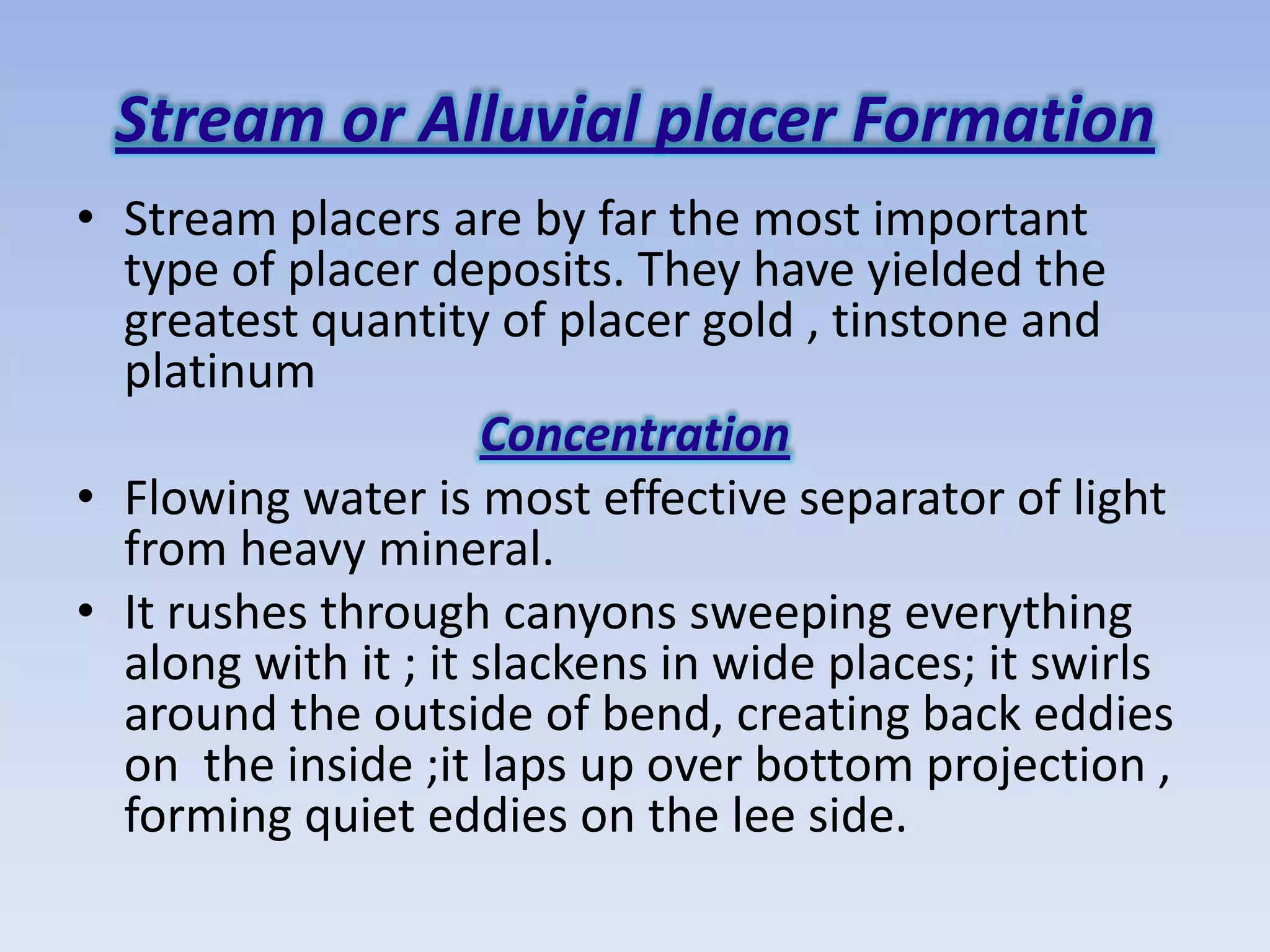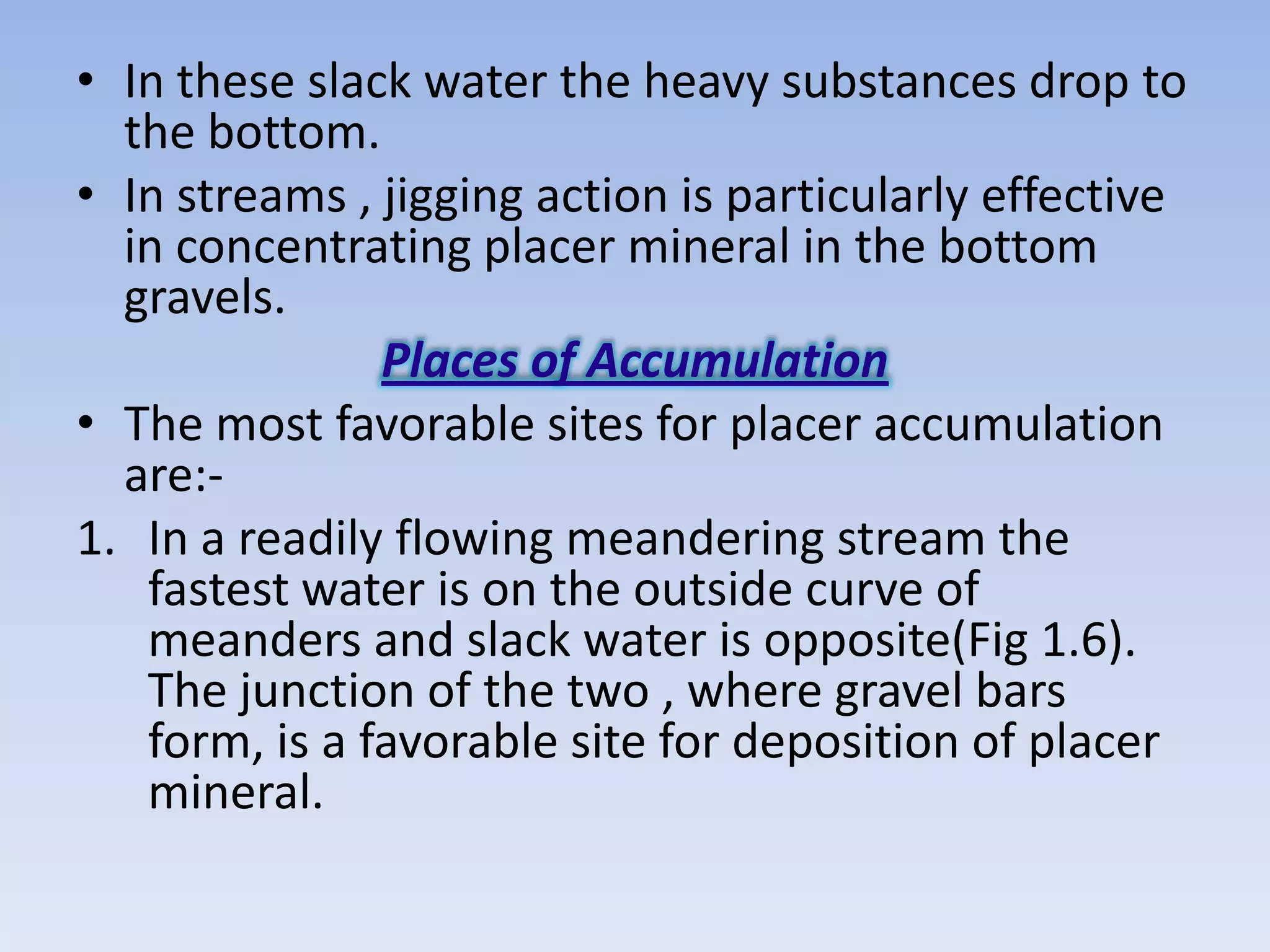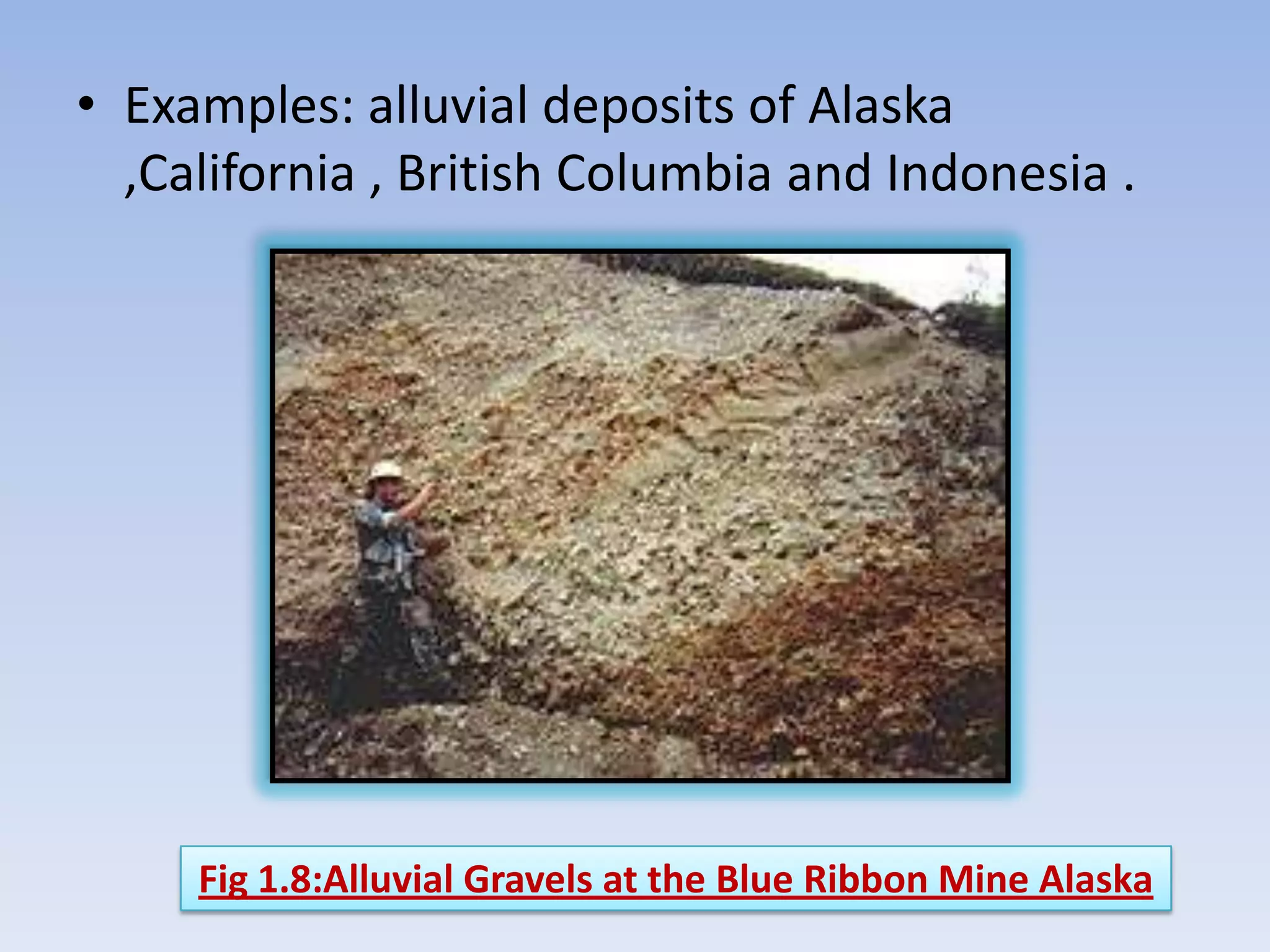Mechanical concentration forms placer deposits by separating heavy minerals from light ones using gravity and moving fluids like water or air. Placer deposits can form in various environments including along hill slopes (eluvial placers), in streams (alluvial placers), on beaches, and from wind (eolian placers). Key factors that influence concentration include differences in mineral density, size, shape, and the velocity of the moving fluid. Common minerals found in placer deposits include gold, platinum, tin, magnetite, and chromite due to their high density and resistance to weathering.
